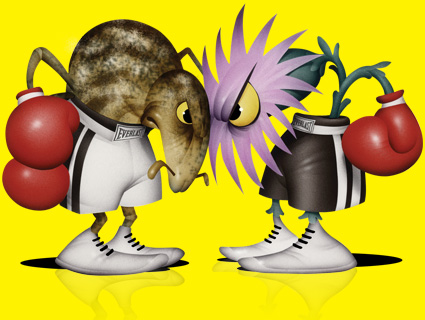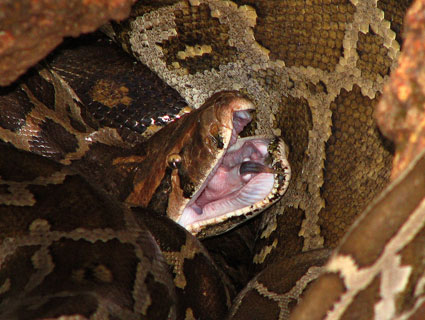
Wikimedia
“Tasmanian Devils are not the friendliest of animals,” explains Kathy Belov as she tries to punch a skin sample from the ear of one of the famously ferocious marsupials. (This one is, fortunately, stuffed inside a burlap sack.) Belov, a geneticist at the University of Sydney, studies Devil Facial Tumor Disease, which has killed almost three quarters Tasmania’s devil population. The unusual affliction, which rots the animals’ faces off and causes them to starve to death, is the unintentional result of contact with humans: Early colonists’ efforts to exterminate the creatures worked so well that they are now seriously inbred, making them vulnerable to this contagious cancer, which is spread by biting. Though the Tasmanian Devils’ case is unique, conservationists are becoming increasingly concerned about other cancer outbreaks in disparate kinds of wildlife—and what role people played in causing them. Some more examples:
- Vets examining stranded California sea lions found that nearly one-fifth had suffered from urogenital cancer linked to a herpes virus. The sick mammals had higher concentrations of PCBs in their blubber than those without cancer. The now-banned chemicals may have suppressed their immune systems, making them more susceptible to virally-induced cancer.
- Female flounders in Central Europe’s Elbe River have been found with unusual liver tumors, most likely caused by exposure to pesticides, mercury, chromium and polychlorinated biphenyls (PCBs). The culprit: Eastern European industries that once lined the river.
- A 2002 study of stranded beluga whales in Canada’s St. Lawrence Estuary found that 27 percent had died of malignant intestinal and breast tumors, probably caused by eating worms that live in sediments contaminated with polycyclic aromatic hydrocarbons (PAHs) from aluminum smelters in Quebec. The incidence of cancer appears to have decreased after smelters using an older, dirtier production process shut down.
- Twenty-two percent of dead green turtles off the eastern coast of the US were found to have tumors of the skin, shell, eyes, heart, lungs and liver. The cause is unknown, but since the disease is more common in degraded or polluted habitats, an environmental factor may be involved.
- Liver lesions have been spotted in English sole in Washington state’s Puget Sound. They’re likely caused by PAHs released by nearby creosote plants, oil refineries, and car exhaust. “If fish are getting cancer,” says Lyndal Johnson, a biologist at Northwest Fisheries Science Center in Seattle, “that’s a wake-up signal.”
















